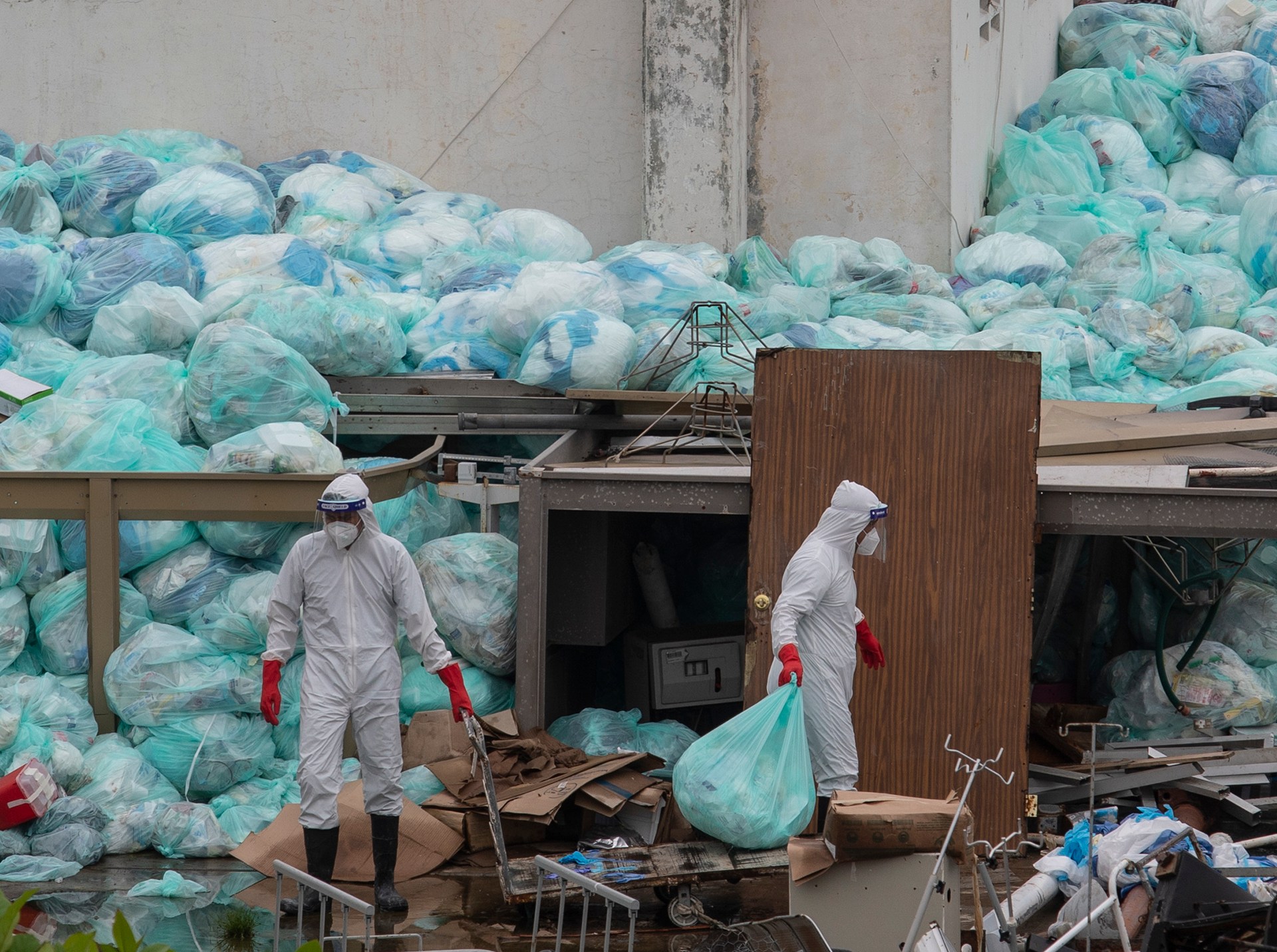Ecological Responsibility: The Eco-Friendly Technique to Medical Waste Disposal
Ecological Responsibility: The Eco-Friendly Technique to Medical Waste Disposal
Blog Article
Exploring Different Garbage Disposal Options for a Cleanser Environment
In the pursuit of a cleaner setting, the monitoring of waste disposal has arised as a critical focal point for sustainable development. With a multitude of waste disposal choices offered, varying from conventional land fill methods to cutting-edge waste-to-energy modern technologies, the selection of exactly how we manage our waste has far-ranging ramifications for our planet's health.
Recycling Approaches
Implementing effective recycling techniques is essential in minimizing waste and promoting sustainability in our atmosphere. Recycling includes the procedure of transforming waste products right into reusable items to stop unneeded disposal. One of one of the most common recycling methods is material recovery, where materials like paper, steel, plastic, and glass are collected, sorted, and refined to develop brand-new items. This process not just conserves all-natural sources yet likewise lowers energy usage and greenhouse gas emissions connected with generating new materials from scrape.
Another essential recycling technique is composting, which involves decaying natural waste like food scraps and backyard trimmings right into nutrient-rich dirt. By incorporating these various reusing techniques into our waste administration practices, we can dramatically reduce our environmental footprint and move in the direction of an extra sustainable future.

Composting Techniques
Reliable waste monitoring methods, such as reusing techniques, pave the means for a cleaner setting, and now, moving the focus to 'Composting Techniques', we explore lasting methods to decay organic waste for ecological benefit. medical waste removal service.
Composting is an all-natural procedure that changes organic waste, like food scraps and lawn trimmings, right into a nutrient-rich dirt amendment. The secret to successful composting exists in creating the ideal equilibrium of eco-friendly products, such as fruit and veggie scraps, and brown materials, like dried fallen leaves and twigs. These products decompose with the assistance of microbes, damaging down the waste into useful garden compost.
Standard yard composting includes layering organic products in a container or pile and on a regular basis turning the combination to aerate it. By using composting methods, we can decrease the quantity of waste sent out to landfills while producing a useful item for enriching dirt and sustaining plant development.
Incineration Disadvantages and pros
Incineration, as a waste disposal approach, presents both advantages and disadvantages that merit cautious consideration in the realm of lasting waste management methods. On the favorable side, incineration can considerably minimize the quantity of waste, lessening the need for land fill area and possibly reducing greenhouse gas discharges.
In addition, the high preliminary financial investment and operational expenses of incineration facilities position economic challenges, making it a much less affordable choice compared to other waste management strategies. Careful surveillance and law are important to mitigate these negative influences and make the most of the advantages of incineration as component of an extensive waste management approach.
Landfill Administration Methods
Land fills play an essential role in waste management and environmental conservation by giving a containment system for the disposal of strong waste materials. Efficient land fill administration methods are vital to mitigate ecological influences and make certain the lasting sustainability of these garbage disposal websites. One crucial method appertains waste compaction to take full advantage of using offered room within the landfill (click here). By compacting the waste, the volume is decreased, permitting even more waste to be suited gradually.
Furthermore, the application of daily cover techniques is crucial in decreasing odors, avoiding litter, and lowering the tourist attraction of parasites. Covering the disposed waste at the end of daily aids to consist of odors and prevent potential ecological contamination. Furthermore, the monitoring of land fill gas emissions and leachate degrees is important in making certain that environmental criteria are fulfilled which any type of potential risks to bordering ecological communities are minimized.

Waste-to-Energy Technologies
One of the cutting-edge strategies to squander administration entails harnessing Waste-to-Energy modern technologies to transform strong waste into usable power resources. Waste-to-Energy (WtE) technologies incorporate a variety of processes that aim to remove power from waste materials through thermal, chemical, or biological methods. This conversion procedure not just reduces the volume of waste that winds up in garbage dumps however likewise produces important power sources such as power, heat, or biofuels.
There are several techniques of Waste-to-Energy conversion, click here consisting of gasification, pyrolysis, and incineration. Incineration entails melting waste at high temperatures to create warm and power. Gasification transforms waste into a syngas, which can be used for power generation or chemical manufacturing. Pyrolysis breaks down natural materials utilizing high temperature levels in the absence of oxygen, creating gas, char, and bio-oil.
Applying Waste-to-Energy innovations can assist alleviate environmental problems related to traditional garbage disposal techniques while at the same time giving a renewable resource resource. Mindful factor to consider has to be provided to discharges control and ensuring the sustainability of feedstock products for these modern technologies to be absolutely valuable for a cleaner environment.

Verdict
In conclusion, checking out numerous waste disposal options such as recycling, composting, incineration, land fill monitoring, and waste-to-energy technologies is vital for advertising a cleaner setting - click here. Each approach has its own benefits and obstacles, however by utilizing a combination of these techniques, we can function in the direction of reducing the amount of waste that winds up in garbage dumps and inevitably add to a more sustainable future for generations to find
With a multitude of waste disposal choices available, varying from standard landfill methods to innovative waste-to-energy technologies, the selection of how we manage our waste has significant effects for our world's health. medical waste removal service.Incineration, as a waste disposal method, provides both advantages and drawbacks that merit careful consideration in the realm of sustainable waste monitoring practices.Landfills play an essential role in waste management and ecological preservation by providing a control system for the disposal of solid waste products. By condensing the waste, the volume is decreased, permitting for even more waste to be fit over time
One of the ingenious strategies to squander administration includes taking advantage of Waste-to-Energy technologies to convert solid waste into usable energy resources.
Report this page